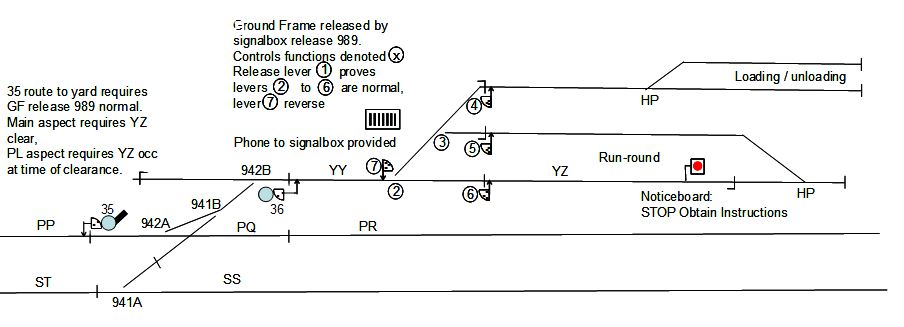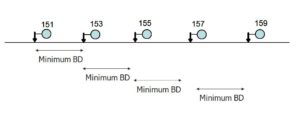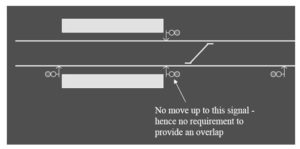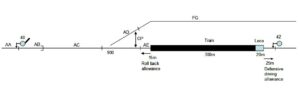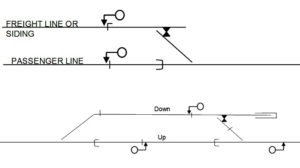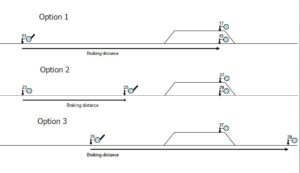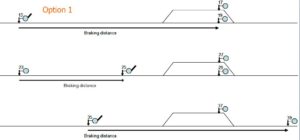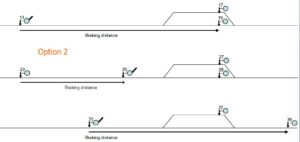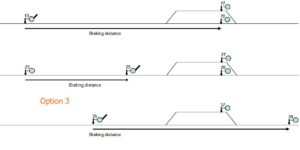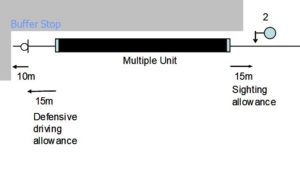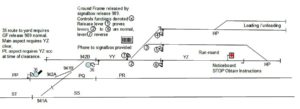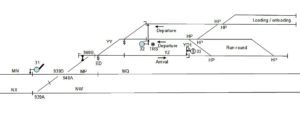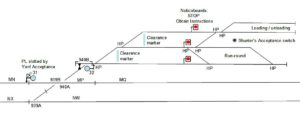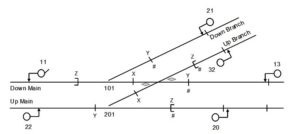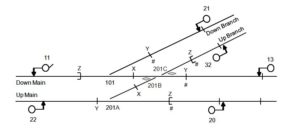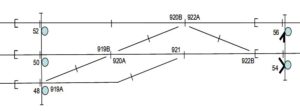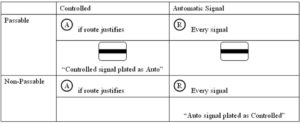Railway Signalling a Track Layout
- Base Information
- Signals at Stations
- Signals at Loops
- Simple Trailing Junction
- Trapping Protection
- Double Junction
- Left-hand double running junction
- Subsidiary Signals
- Signalling at Terminal Station
Railway Signalling a Track Layout Base information
- Base Information
- Signals at Stations
- Signals at Loops
- Simple Trailing Junction
- Trapping Protection
- Double Junction
- Left-hand double running junction
- Subsidiary Signals
- Signalling at Terminal Station
Civil Engineering Features (List is not exhaustive)
- Main Route lines
- Gradient Posts
- Mileposts
- Permissible Speed
- Accurate position of S&C (Drawn in their Normal Lie)
- Viaducts and Tunnels (with lengths)
- Stations and platforms
- Level crossings
- Bridges
- Site access points
Other Features
- Traction substations/huts
- Limit and type of electrification
- Mileposts
- Characteristics of the trains running on the line (Braking/Acceleration etc)
Railway Signalling a Track Layout Signals on Plain line
Signals at Stations
- In the common situation where there is point work immediately beyond a station platform, then a signal should be placed at the departure end of the platform.
- Platform departure signals would be required at both ends of the platform despite the line itself being apparently uni-directional. This is to facilitate reversing trains.
Signals and Overlaps
105 – 107 Points not required
205 – 207 requires Points Normal
Signals Beyond Junctions
Signals at trailing points
TRAP POINTS
Signals on Loops
1. parallel signals 17 & 19 at the end of the loop
2. excessive distance from the facing points
3. causes unnecessary delay in normal working for
4. trains entering the loop and is particularly inconvenient
5. when operating in degraded mode when a failure
6. prevents 13 from being cleared.
1. Parallel signals 27 & 29 at the end of the loop
2. Underbraking of signals 25 and 29. additional Controls are required.
1.May Solve 800m Problem and Underbraking problem
2.Signals are not parallel, Misinterpretation Problem may arise.
It is important therefore to appreciate that there is no one option that is always best.
it is a matter of compromise between different, and often conflicting, considerations. This indeed is the skill of the designer.
for anyone in particular case one of the options is likely to be clearly preferable, another acceptable but sub-optimal and the remaining one distinctly unsuitable if not completely unacceptable.
Terminal Station
Subsidiary/Shunt Signals (Position Light Signals)
Railway Signalling a Track Layout Signalling at Yards – 2
Signalling at Yards – 3
 Double Junction
Double Junction
A double junction is a railway junction where a double-track railway splits into two double-track lines. Usually, one line is mainline and carries traffic through the junction at normal speed, while the other track is a branch line that carries traffic through the junction at reduced speed.
Left Hand Double Junction
Switch Diamond
Signals just beyond Junctions
There are no such hard and fast rule but wherever possible a signal should not be placed closer than MRD to the junction.
Passable/Non Passable Signals Railway Signalling a Track Layout
